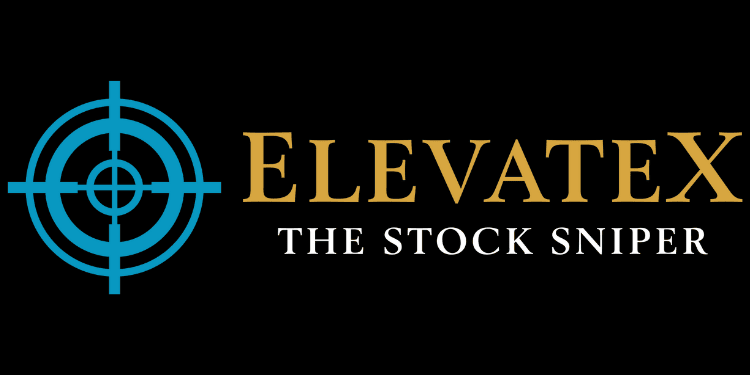- Live Life Grow Wealth
- Posts
- 🏦Series 6 Day 4: What Is Leverage (and Why It’s Risky?)
🏦Series 6 Day 4: What Is Leverage (and Why It’s Risky?)

Today’s Headline
🏦 Series 6: Advanced Topics (For Curious Learners)
Day 4: What Is Leverage (and Why It’s Risky?)
When I first heard the word “leverage”, it sounded like something powerful — almost magical. Imagine being able to make bigger profits without needing a lot of money upfront. Sounds amazing, right? That’s exactly why so many investors get attracted to it. But over time, I learned that leverage is like playing with fire — it can cook your food faster, but it can also burn your house down if you’re not careful.
In today’s lesson, let’s talk about what leverage really means, how it works, why it’s so tempting, and most importantly — why it can be dangerous if used the wrong way.
“Unlock the tool savvy investors use to automate data hunting—DESelect lets you segment and analyze in minutes, so you spend less time crunching and more time capitalizing.”
Drag-and-drop segmentation for marketers eliminates dependence on technical teams.
Empower your marketing team with DESelect Segment, drag-and-drop segmentation made simple. Say goodbye to reliance on technical teams and SQL queries. Create precise Salesforce Marketing Cloud segments faster and easier than ever.
No coding or IT support needed
Combine multiple data sources effortlessly
Build complex audiences with ease
Automate segment refreshes to save time
What Exactly Is Leverage?
Leverage means using borrowed money to invest. It allows you to control a larger amount of investment than what you actually own.
Here’s a simple example: imagine you have $1,000. If you invest that $1,000 directly into a stock, you control $1,000 worth of that stock. But if you use leverage — say, you borrow another $1,000 from your broker — you now control $2,000 worth of stock.
If the stock price goes up by 10%, your investment is now worth $2,200. You repay the $1,000 you borrowed, and you’re left with $1,200. That’s a 20% gain on your original $1,000 — double the profit you’d get without leverage.
Sounds fantastic, right?
But here’s the flip side: if the stock price goes down by 10%, your investment drops to $1,800. After repaying the $1,000 loan, you’re left with $800. That’s a 20% loss — double the pain.
That’s the double-edged sword of leverage. It magnifies both your gains and your losses.
The Temptation of Leverage
Let’s be honest — leverage is exciting. It makes you feel powerful, like you’ve unlocked a cheat code in the game of investing. You can make big moves even with small capital.
Many new investors, especially in forex or crypto, fall into this trap. They think, “If I can double my money with a 10% gain, why not?” The problem is — markets don’t move in straight lines.
They go up, down, sideways, and sometimes drop sharply without warning. When you’re using leverage, even small price swings can cause massive changes to your account balance.
What makes leverage so dangerous is that it gives the illusion of control. It feels like you’re in charge, but the truth is, one wrong move can wipe out your capital faster than you can react.
How Leverage Works in Real Life
In real-world investing, leverage appears in different forms:
Margin Trading – This is when you borrow money from a broker to buy more stocks or assets.
Options and Futures – These are contracts that let you control a large position with a small amount of money.
Real Estate Loans – When you buy property using a mortgage, you’re also using leverage — the bank lends you money so you can own a bigger asset.
Leverage itself isn’t evil. In fact, most wealthy people use some form of it. The key difference is how much and how smartly they use it.
Rich investors and institutions often have large safety buffers, plenty of cash reserves, and years of experience. The problem comes when beginners use too much leverage without understanding the risks.
The Math Behind the Risk
Let’s break it down with another simple example.
Suppose you invest $1,000 and use 5x leverage — meaning you’re borrowing $4,000. So you now control $5,000 worth of assets.
If your investment goes up 10%, your $5,000 becomes $5,500. After paying back the $4,000 loan, you have $1,500 — a 50% profit.
But if your investment goes down 10%, your $5,000 becomes $4,500. After repaying the $4,000, you’re left with only $500 — a 50% loss.
That’s the power — and the danger — of leverage. It doesn’t change the market; it just amplifies whatever happens next.
Margin Calls: The Nightmare of Leverage
One of the scariest parts of leverage is something called a margin call.
This happens when your investment loses value, and the broker demands that you add more money to your account to cover the loss. If you don’t, they’ll automatically sell your investment — often at a big loss — to protect themselves.
I’ve seen traders go from confident to devastated in a single day because of a margin call. Sometimes, their entire portfolio is wiped out before they even have a chance to react.
That’s why I always tell new investors: if you’re not prepared to handle margin calls emotionally and financially, stay away from leverage.
Find your customers on Roku this Black Friday
As with any digital ad campaign, the important thing is to reach streaming audiences who will convert. To that end, Roku’s self-service Ads Manager stands ready with powerful segmentation and targeting options. After all, you know your customers, and we know our streaming audience.
Worried it’s too late to spin up new Black Friday creative? With Roku Ads Manager, you can easily import and augment existing creative assets from your social channels. We also have AI-assisted upscaling, so every ad is primed for CTV.
Once you’ve done this, then you can easily set up A/B tests to flight different creative variants and Black Friday offers. If you’re a Shopify brand, you can even run shoppable ads directly on-screen so viewers can purchase with just a click of their Roku remote.
Bonus: we’re gifting you $5K in ad credits when you spend your first $5K on Roku Ads Manager. Just sign up and use code GET5K. Terms apply.
Why Leverage Feels Addictive
Leverage plays tricks on your brain. When it works, it makes you feel invincible. You start thinking, “I figured it out. I can turn $1,000 into $10,000!”
But when it fails, it crushes your confidence — and your wallet.
It’s similar to gambling psychology. Every time you win, you feel rewarded. Every time you lose, you feel the urge to recover what you lost. This emotional rollercoaster is dangerous because it pushes you to take even bigger risks.
That’s why many experienced investors call leverage a “silent killer” of portfolios. It doesn’t destroy you immediately — it lures you in slowly, then hits hard when you least expect it.
When Leverage Can Be Used Wisely
Even though leverage is risky, it’s not completely bad. When used wisely and in moderation, it can accelerate your growth.
Here’s when it might make sense:
You have experience and a solid strategy.
Leverage is not for beginners. If you already understand risk management and have a proven system, small leverage (like 1.5x or 2x) can enhance your returns.You’re investing in stable, income-generating assets.
For example, using a reasonable mortgage to buy rental property can be smart if the rental income covers the loan payments.You have emergency funds and backup capital.
Never use leverage with money you can’t afford to lose. Having reserves helps you survive bad times without being forced to sell.You monitor your investments closely.
Leverage requires attention. If you’re not actively tracking your positions, you’re putting yourself in danger.
The keyword here is control. Leverage magnifies both gains and mistakes. If you can’t control your emotions and decisions, it’s better not to use it at all.
The Safer Way to Grow Wealth
Instead of chasing fast profits through leverage, I believe in building wealth the steady way.
Here’s what I’ve learned over the years:
Consistency beats intensity. Investing regularly and patiently always wins in the long run.
Diversify your assets. Don’t put all your eggs in one basket. Spread your risk across different investments.
Avoid FOMO (Fear of Missing Out). Markets move in cycles. There will always be another opportunity.
Use cash, not credit. When you invest with your own money, you think more clearly and sleep better at night.
Building wealth takes time. The slow path may not look exciting, but it’s the one that keeps you in the game.
Emotional Control Is the Real Leverage
I’ve come to realize that the strongest form of leverage isn’t financial — it’s emotional.
If you can control your emotions when everyone else is panicking, you already have an edge.
Leverage can amplify your returns, but emotional discipline amplifies your results for a lifetime. Knowing when to say no to risky opportunities is what keeps your wealth safe and your confidence strong.
In investing, sometimes restraint is more powerful than aggression.
My Takeaway for You
Leverage is a tool — not a shortcut. Used wisely, it can accelerate your journey. Used recklessly, it can end it.
Before you ever use leverage, ask yourself:
Do I fully understand the risks?
Can I afford to lose this money?
Do I have a plan if things go wrong?
If any of your answers are “no,” then don’t do it. Remember, you don’t need leverage to get rich — you need time, consistency, and good decisions.
Final Takeaways
Leverage is like a knife — it can help you cook a great meal, but it can also cut you deeply if you’re careless.
The most successful investors aren’t the ones who take the biggest risks. They’re the ones who manage their risks the best. They understand that protecting capital is just as important as growing it.
So take this as your reminder: you don’t need to swing for the fences. Focus on solid, steady growth. Build your foundation first, and only use leverage if you’re truly prepared.
Because at the end of the day, it’s not how fast you grow — it’s how long you can stay in the game.
Call to Action:
If you’ve ever felt tempted to use leverage, pause and reflect before acting. Ask yourself what your long-term goal truly is — fast money or lasting wealth. This week, take time to review your investments and see if you’re using risk wisely. Protect your capital first — because in investing, survival is the first step to success.
[Live Life Grow Wealth]
🎓 Free Masterclasses to Unlock Your Investment Potential
Take your money skills to the next level with expert-led workshops designed to help you grow smarter and faster.
Recommendations Section
“Peek into smart money moves — when big players act, you’re in the loop.”
|
Learn simple, proven ways to grow your money — straight from real investors who walk the talk.
|
“Hone your investing edge in just 5 minutes — smart, snappy insights to power your portfolio growth.”
|
“Stay ahead with one expert-picked stock monthly — clear, no jargon, built for growth.”
DISCLAIMER
I make no representations, warranties, or guarantees, whether expressed or implied, that the content provided is accurate, complete, or up-to-date. Past performance is not indicative nor a guarantee of future returns.
I am an individual content creator and not regulated or licensed by the Monetary Authority of Singapore (MAS) as I do not provide investment services.
All forms of investments carry risks, including the risk of losing your entire invested amount. Such activities may not be suitable for everyone. You are strongly encouraged to seek advice from a professional financial advisor if you have any doubts or concerns.








